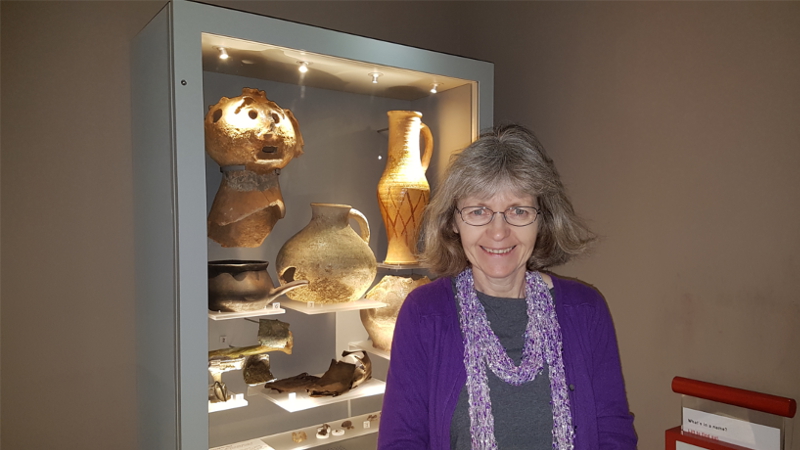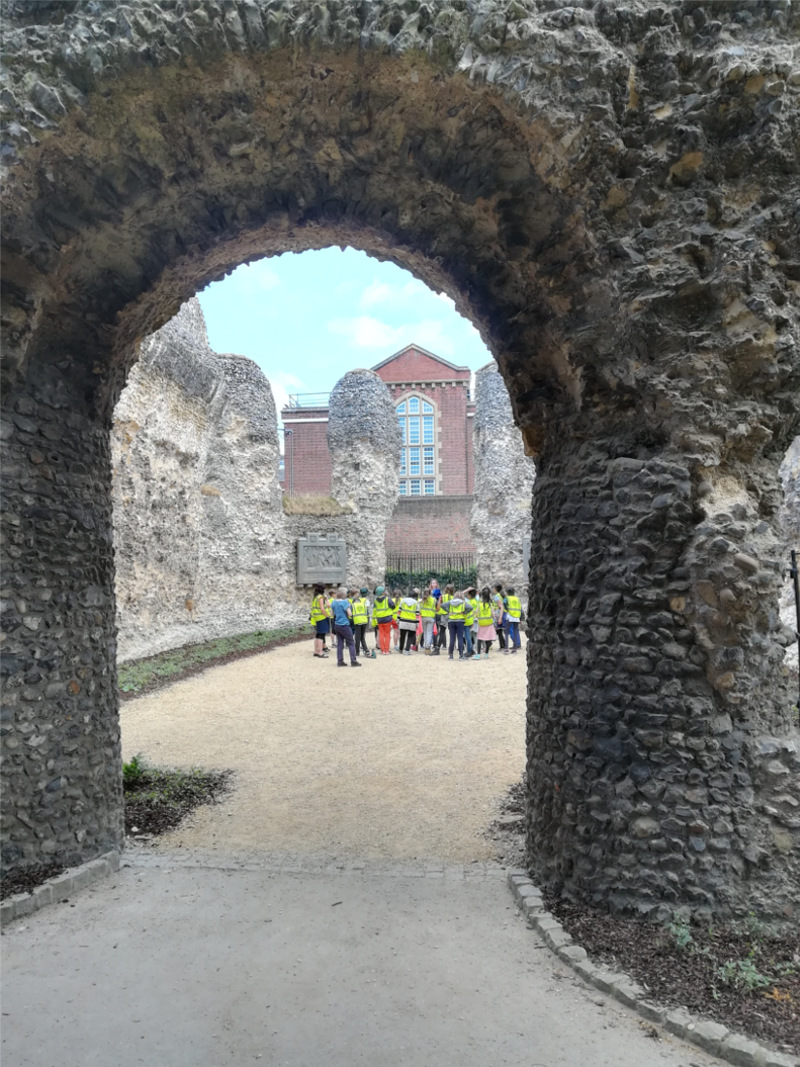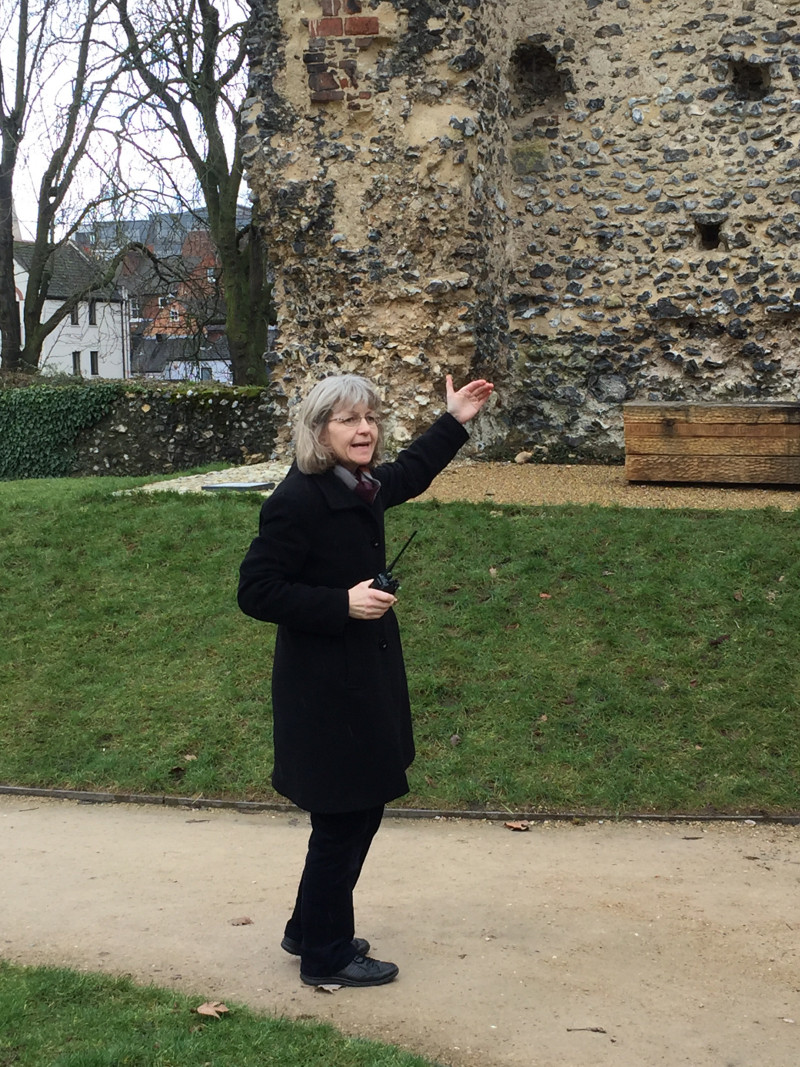Catherine is one of our newer session leaders and we asked her to tell us about one of her favourite sessions to teach. She tells us below about the first session she taught with us – Royals in Reading. This session takes children outside into the Reading Abbey Ruins to learn about the amazing history of the Abbey!
Royals in Reading
For hundreds of years Reading has been a popular place for Royalty to visit as well as a place where Royal power, wealth and politics have been displayed. The Royals in Reading School session introduces pupils to Henry l, Henry VIll and Elizabeth l. I really enjoy leading the session and helping the children explore how their own local history has been intertwined with national figures and events.

In the Story of Reading Gallery
One of the great things about the session is that it takes place both in the Museum Galleries and in the Abbey Ruins. We start our session in the Story of Reading Gallery and introduce the children to Henry l who founded Reading Abbey in 1121 and then to Henry VIll whose policies led to its closure in 1539. The gallery contains a wonderful portrait of Elizabeth l and she seems to watch over the children as they set off in pairs on a hunt around the gallery for objects (such as the Reading Abbey seal created in 1328 showing Henry l on one side, a part of a tomb that could belong to Henry l or a painting by Harry Morley showing the execution of Hugh Faringdon on the orders of Henry VllI) and information relating to each of the monarchs. The children can be heard excitedly examining carved stonework from the Abbey or listening to a recording of “Sumer is icumen in.”

Objects from our Reading Abbey handling box
Soon it is time to move from looking at objects to handling them. I always find this an exciting part of the session. For a short while the children can become young curators and learn how to handle objects correctly, examine them for clues and find out what they can tell us about the people who lived in Reading in the past. Between 1979 and 1986 the Abbey Wharf was excavated and a wide variety of objects were found. Some of these objects are now in the handling collection and the children work together to identify objects as diverse as wood from timbers in the wharf to fragments of shoe leather and pottery. For some children (and many of the adults) the opportunity to handle objects that have travelled through time from Medieval Reading to 2019 is an inspiring and unforgettable experience.

Some objects from Reading Abbey handling objects
Preparations are now made for the part of the session which takes place in the Abbey ruins. Some children choose to wear Tudor style hats, made by our sewing volunteers, and we set off to walk back through time to the Abbey. The children are always astonished, with gasps and calls of ‘wow!’ by the size of the ruins when we walk through the tunnel leading from Forbury Gardens. The Chapter House becomes an outdoor learning space where the children lay out maps and think about why Henry l decided to build Reading Abbey where he did. Next, the children imagine what the Chapter House might have been like in the early days of Henry VllI’s reign. Wonderful tapestries, stained glass and rich furnishings would have surrounded them. But what happened at the Dissolution? What was sold? What wasn’t sold? The children decide and then there are usually quite a few surprises when the original sale and disposal records (recorded in 1539) are consulted and compared with the children’s decisions.

Children in the Abbey Ruins
The final Monarch of the session is Elizabeth l who enjoyed visiting Reading and staying with her friends the Knollys family in the former Abbot’s house. The Knollys needed to provide entertainment for the Queen and so the session ends with the children learning a Tudor Branle (or dance). One child is chosen to play a steady beat on an Elizabethan style drum while the air of the Abbey is filled with the sound of Tudor music. Everyone has great fun entertaining the Queen with the stately and elegant dance before the music fades away and it is time to return to the Museum.

In the Dormitory
As we leave we walk through the Dormitory to what was either the Reredorter/Necessarium (the communal toilet for the monks at Reading Abbey) or storage of things delivered to the Abbey by the River Kennet. We take a vote and the children always decide it was the toilet! There is just time for a final stop in the South Transept of the Abbey Church where we explain to the children that Henry l’s burial place is still unknown. Maybe they will one day be the person who solves the mystery and finds him.
The walk back to the Museum is a good opportunity to chat with the children about the session. They have all had a great time and because there is such a variety of activities each child is able to think of something they have really enjoyed learning and doing. As session leader I enjoy leading every part of the Royals in Reading. It’s wonderful to see children having great fun while learning so much about their own local and national history.
Find out more
Our schools pages have been updated! You can find out more about sessions, projects and Arts Award on our new school section or contact the Learning Team.





